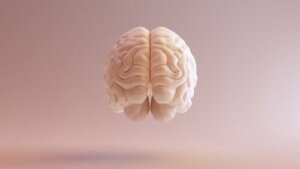The Main Functions of the Dorsolateral Prefrontal Cortex


Written and verified by the psychologist Gema Sánchez Cuevas
The prefrontal lobes are the key elements for the modulation and control of human behavior. They’re undoubtedly fundamental as regards the integration of cognitive, motivational, and emotional information. Their connection with almost every area of the brain makes them very important, and that’s why study and research in this area are essential. Within the prefrontal lobes, we find the dorsolateral prefrontal cortex – an area that’s vital for human behavior.
The frontal regions of the brain allow us to be autonomous beings, thus giving us a good part of the control we have over our lives. The brain does this through the so-called executive functions, functions that characterize us as human beings. Thanks to these areas, we can also build our identity and develop self-awareness.
These regions make it possible for us to have internal dialogue and communication. Social cognition takes place in these areas, and it’s there where empathy originates. This is the ability to put ourselves in another person’s shoes. At the same time, they also enable us to predict other people’s behavior, anticipating their intentions, or to understand aspects such as deception.

Frontal lobe anatomy
The frontal lobe divides into several areas:
- Motor, premotor, and supplemental areas.
- Frontal eye field.
- Broca’s area.
- Prefrontal cortex.
At the same time it’s subdivided into three regions:
- Dorsolateral
- Orbital
- Medial
The main functions of the dorsolateral prefrontal cortex
Both Stuss and Knight (2002) and Tirapu and Ustárroz (2012), point out some of the main characteristics of this cortex:
- Inhibition, coordination, and, also, modulation of behavior.
- Searching, recovery, and updating of relevant information at all times.
- Planning, preparation, and anticipation through time signals.
- Cognitive and emotional regulation and control.
- Flexibility to change attention and behaviors as conditions change.
Burgess’ team (2012) conducted a review of the scientific literature on the main functions of the dorsal prefrontal cortex. They concluded that most of the research agreed that attention, memory, language, and time preparation and sequencing are the most prominent functions.
Attentional control
One of the main functions of the dorsolateral prefrontal cortex is attentional control. This control encompasses processes such as task shifting, divided attention capability, preparation for action, and, also, interference control.
“Without selective attention, the experience would be complete chaos.”
-Daniel Goleman-
Memory
Regarding memory, we must make a distinction between working (operating) memory and declarative memory. Working memory is a system that allows our brain to retain information and work on it. Baddeley (2010) states that the dorsolateral prefrontal cortex would act as a “central executive”. According to the author, it has “the capacity to recover information and keep it active while it’s being processed”.
On the other hand, Stuss and Levine (2002), postulate that the participation of this area increases when the information demanded “exceeds the capacity of the working memory and when it’s necessary to control distracting factors that may interfere with the relevant information that’s being worked on”.
As for declarative memory, the dorsolateral prefrontal cortex seems to take part in information retrieval processes. It’s involved in choosing the best strategies for coding information which relates to processes associated with source memory. Source memory remembers the characteristics of an event: what, how, when, where… etc.
Alterations in source memory affect the ability of subjects to examine the origin of their memories. Experts call this process “reality monitoring”. This way, they can distinguish between real and imagined events. Baddeley states that “a deficit in this process may be responsible for the phenomena of proactive interference and the frequent intrusions and confusions presented by patients with a prefrontal injury”.
Language
The lack of verbal fluency is related to prefrontal lesions, especially those produced on the left side. At the same time, narrative discourse would also be affected in terms of its simplification and the omission of grammatical forms when alterations appear in this area.
Preparation and temporal sequencing
Finally, time planning is a key capacity for organizing activities and managing our daily lives. Several investigations highlight the importance of the frontal regions of the brain in planning.
Arnedo, Bembibre, and Triviño (2013) state that preparation and temporal monitoring is carried out “through a constant updating of the information regarding the time required to carry out an action and keep it in memory until the moment of carrying it out”.
All cited sources were thoroughly reviewed by our team to ensure their quality, reliability, currency, and validity. The bibliography of this article was considered reliable and of academic or scientific accuracy.
- Portellano, J. A. (2005). Introducción a la neuropsicología. McGrawHill.
- Levy, R., & Goldman-Rakic, P. S. (2000). Segregation of working memory functions within the dorsolateral prefrontal cortex. Executive control and the frontal lobe: Current issues, 23-32.
- Barbey, A. K., Colom, R., & Grafman, J. (2013). Dorsolateral prefrontal contributions to human intelligence. Neuropsychologia, 51(7), 1361-1369.
- Seminowicz, D. A., & Moayedi, M. (2017). The dorsolateral prefrontal cortex in acute and chronic pain. The Journal of Pain, 18(9), 1027-1035.
This text is provided for informational purposes only and does not replace consultation with a professional. If in doubt, consult your specialist.








